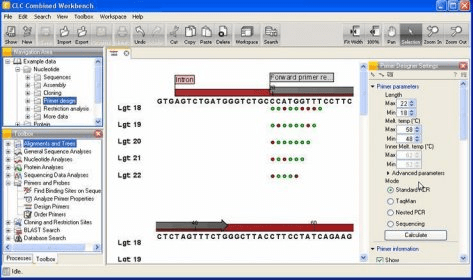
Commercially available 5(6)-carboxyfluorescein (Flc) and biotin are easy to equip with sulfhydryl groups by a simple one-step coupling reaction of 2-aminoethane-1-thiol to the respective carboxy moiety. Biotin and fluorescein as commonly used and easily accessible tools have been chosen as they provide various assay development possibilities. To develop the two-step modification protocol, suitable test additives were required. Because of its most suitable sulfhydryl-reactivity, the bromoacetyl group was chosen over other alternatives as the terminal reactive moiety forming a covalent thioether bond.

To retain the symmetry, the sulfhydryl-reactive moieties had to be attached to the four bridgehead carbon atoms of the adamantane structure. The tetrahedral symmetry of the adamantane scaffold is an attractive feature that fulfills the requirements for the development of a tetravalent linker molecule. This tool kit strategy facilitates the development of novel peptide hybrids for therapeutic and diagnostic applications. Following this approach, the two-step modification allows the phage display of bicyclic peptide libraries that already bear a functional additive attached to the adamatane-based linker on phage during the selection process against any target. In the second step of the protocol, this fourth position can be functionalized by a broad variety of sulfhydryl-bearing probes, warheads, linkers, tools, or drugs. During the first step, the symmetrical tetravalent linker is efficiently modified by the three cysteine residues contained in every peptide of the phage library, leaving the fourth reactive position unmodified. (9) To amplify the spectrum of potential applications, herein, we suggest to expand the one-step modification method on phage toward a two-step reaction by introducing the tetravalent linker N, N′, N″, N‴-(adamantane-1,3,5,7-tetrayl)tetrakis(2-bromoacetamide) (NATBA, 8). (8) Under physiological conditions, the comparatively high nucleophilicity of the sulfhydryl moiety of cysteine enables the selective reaction with certain electrophilic trivalent linker molecules like, e.g., tris(bromomethyl)benzene (TBMB) to generate bicyclic peptides. (6−8) Inspired by the flexible regions of antibodies, their generated phage library presents peptides that contain two variable hexapeptide loops flanked by three cysteines. (4) Heinis and Winter developed a phage display-based methodology for the selection of chemically modified peptides. (4,5) In comparison to linear peptides, small cyclic peptides show higher proteolytic stability. (3) Furthermore, the oral bioavailability for the therapeutic application of small cyclic peptides has already been demonstrated. (1,2) Besides enhanced binding affinities and target specificities of constrained cyclic peptide scaffolds, they are able to interact with rather flat, featureless surfaces of proteins and therefore can efficiently target protein–protein interactions that are difficult to address by small molecules. The diverse biological activities and favorable properties of chemically constrained cyclic peptides make them an attractive format for applications in research and drug development.


The newly developed symmetric tetravalent linker opens new avenues for the combinatorial selection and functionalization of bicyclic peptide ligands with affinity to virtually any target. After phage display against a model target, isolated peptides show strong consensus sequences, indicating target-specific binding. This “tool kit” strategy was applied to cyclize and functionalize a phage-encoded peptide library bearing the sequence CX 6CX 6C. We have developed an in vitro two-step modification strategy that allows the generation of differently functionalized bicyclic peptides. Herein, we report the synthesis of an adamantane-based, symmetrical, tetravalent, sulfhydryl-specific peptide linker. Selective chemical modification strategies are able to extend the scope of applications not only in a therapeutic manner but also for the development of novel tools for protein capturing, bioimaging, and targeted drug delivery. The rigid conformation of constrained bicyclic peptides provides a number of advantages over larger protein-based ligands, including better chemical stability, enhanced tissue penetration, and a wider field of possible applications.


 0 kommentar(er)
0 kommentar(er)
